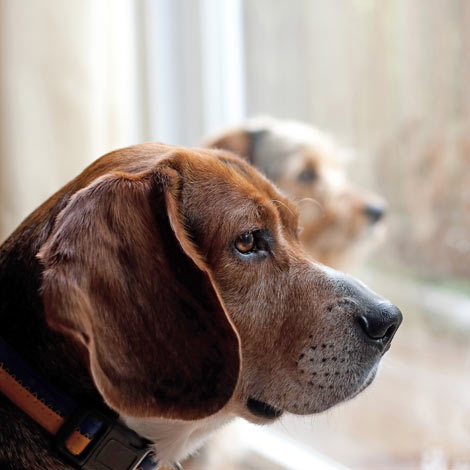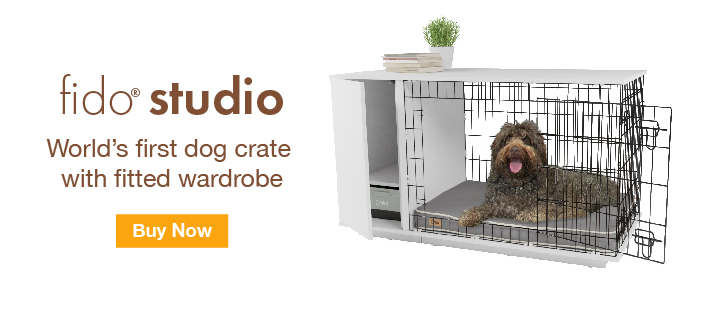The bonds that develop between your family and your dog are strong. They quickly see themselves as an integral part of the new pack, aka your family. If you have to leave them alone at certain points in the day they can feel abandoned and many become anxious when this happens.

A sad Mastiff left at home alone
Separation anxiety is the most common reason for destructive behaviors when your dog is left alone. Your dog might develop behaviours such as chewing, biting, barking, drooling, escaping, pacing, stealing food and scavenging for dead animals or faeces when out on a walk. The reason dogs develop these behaviours is because they become stressed when they are left alone, separated from their family, experience a change in their usual environment, or experience a change in their schedule. It is common for you to notice separation anxiety behaviours as you are about to leave your dog, or just after you have left.

Two bored dogs left at home with nothing to do
Prevention And Treatment
You need to get your dog used to being left alone for short periods of time so that he knows that everything will be okay. The earlier you can do this the more effective the training will be. Crate training is the best method as it provides your dog with a calm and quiet environment that he can call his own. It is important that you allow your dog to spend time by himself, either in his crate, another room or the garden. This will help to prevent your dog from becoming overly dependent on you. Do not leave a puppy on its own as it might develop negative behaviours whilst you are not looking, but you can crate train a puppy under your supervision. To find out how to crate train a puppy or an older dog read here.
Crate Training A Dog With Separation Anxiety
Crate training is an effective method of preventing separation anxiety. If your dog has developed destructive behaviour in your absence then he might be getting anxious when left alone. Read our section “introducing an older dog to his new crate - taking it slowly” so that you can teach your dog that it is okay to be left alone. Make sure that you begin by leaving your dog for small intervals and slowly increase them as he becomes more comfortable. It is important that you only begin crate training once you have tired out your dog with a long walk, and make the crate comfortable and inviting for him by providing a soft blanket and rewarding him whenever he is calm and quiet.
Make that your departure is not dragged out when you are leaving the house. The less fuss you make the better as it won’t be such a shock when you leave him on his own. It can help to give your dog a distraction as you leave so your absence is less noticeable. Giving your dog his favourite toy, or a kong filled with his favorite treat just before you leave can be a great distraction.
Anti-anxiety Coats
Think of your favourite clothes to put on at the end of a hard days work. Things like pyjama bottoms, hoodies and tracksuit bottoms spring to mind. These sort of clothes comfort and relax us, so is it any surprise that your dog may feel comforted by their own cosy coat.

A very upset Labrador that has been left at home alone all day
An anti-anxiety coat can be used to calm your dog down. It applies gentle pressure to your dog’s torso which for a lot of dogs can have a calming effect. Not only do anti-anxiety coats help with dogs that suffer from separation anxiety, they also help to calm dogs down who get scared by fireworks, thunder, and even traveling in the car. To find out more about our anti-anxiety coats follow this link to our wonderful dog products. We stock sizes to fit every dog breed.





Comments
There are no comments just yet